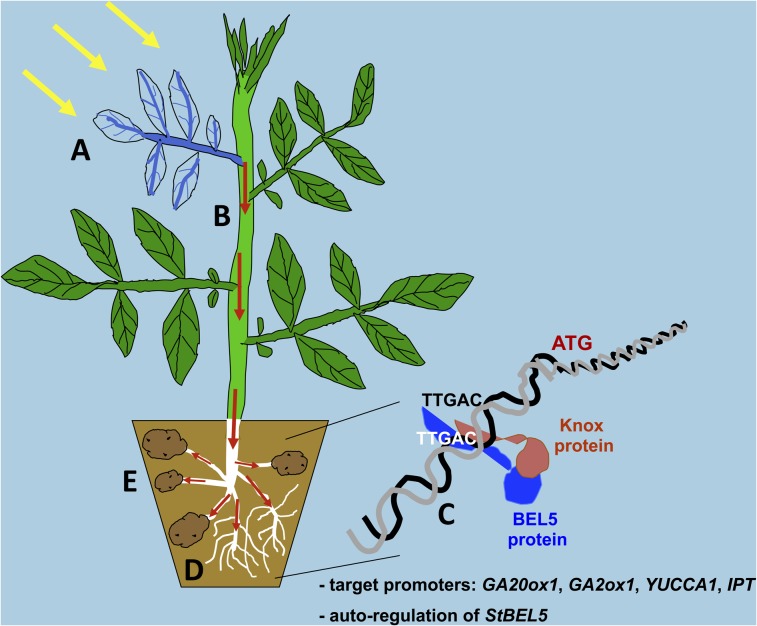Figure 9.
Model showing the impact of mobile StBEL5 RNA on root and tuber development. Previously, the long-distance transport of StBEL5 RNA was shown to be correlated with the induction of tuber formation in potato (Banerjee et al., 2006a). This signaling pathway is based on the initial activation of transcription by light (A, yellow arrows) of the StBEL5 gene in the veins of leaves and petioles (A, blue). A short-day photoperiod facilitates movement of the StBEL5 RNA to stolon tips, whereas movement to roots occurs regardless of daylength (B, red arrows). Under these conditions, RNA may be escorted to site-specific targets, like stolon tips or roots, via protein chaperones (Ham et al., 2009). Enhanced translation then occurs in the stolon tip or root followed by binding to a Knox protein partner (C) and subsequent activation of the transcription and regulation of select genes (e.g. GA20ox1, GA2ox1, YUCCA1, IPT, and StBEL5) by binding to the tandem TTGAC core motif of the target promoter. In this model, transcriptional regulation then leads to enhanced growth of roots (D) and tubers (E) modulated by hormone levels. (Modified from figure 10.4 in Hannapel, 2012. This material is reproduced with permission of John Wiley & Sons.)

